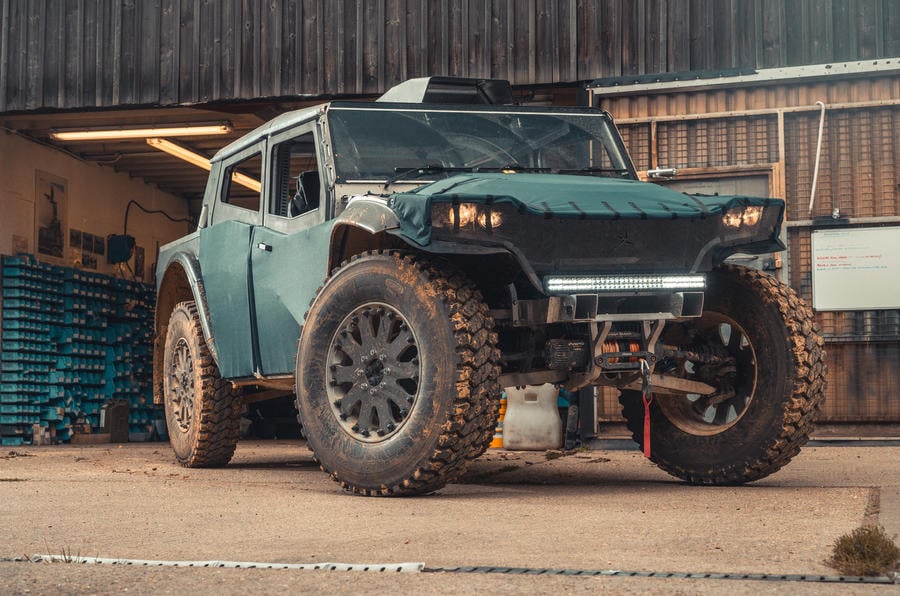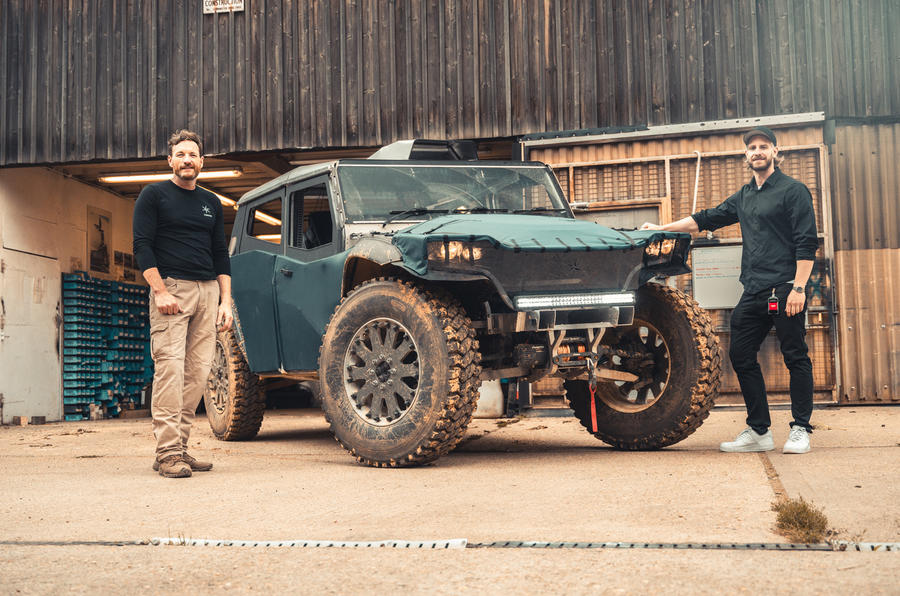Surrey firm, led by Ferrari SF90 engineer, lifts the lid on its quad-motor expedition weapon.
An extraordinary new trans-global exploration vehicle called the Fering Pioneer, a “green” 4×4 built for expeditions as extreme and diverse as crossing the Antarctic or penetrating uncharted Amazon rainforests, is under development at a secret HQ in the UK.
Designed to penetrate pristine environments without leaving a heavy footprint, the Pioneer, developed under the codename FP1, is being built by a crack team of British engineers originally formed to build some of the world’s greatest hypercars, but who believe they now have a better mission to “create something really useful”.
The new company bears the unusual name of Fering — believed to be an old English word for “companion” — and currently comprises around 20 people — entrepreneurs, engineers, designers and even an expedition logistics expert. The Pioneer has been in development for about 18 months, with design sketching beginning in earnest about a year ago.
The first prototype, photographed here, was built during lockdown. Early testing has started, but while the partners agree its mechanical layout is largely fixed, its shape and body layout are likely to change, not least because customers’ requirements will vary widely. Eventual demand is estimated at 150 to 200 vehicles a year, from adventurers, explorers and emergency services willing to pay almost $300,000 for a standard vehicle, or considerably more for a specially equipped or adapted model.
The project’s leader is Ben Scott-Geddes (left, above), a well-known car engineer who cut his teeth working with Gordon Murray on the McLaren F1, then built and developed the radical Caparo T1 hypercar. Until 2018 he was the leading structures expert on the headline-grabbing Ferrari SF90 hybrid supercar.
This new project could hardly be more different: it has a similar in road footprint to a Ford Transit (around 4.8m long and 2m wide) but is otherwise like no production 4×4 ever built. Its basis is a light but hugely strong modular aluminium chassis formed of four main chassis tubes, with composite panels bonded-in to enhance rigidity. Each axle has its own electric motor, and each wheel is independently suspended with its own 2:1 geared hub that improves ground clearance and multiplies torque.
The Pioneer has a range extender powertrain with separate Yasa P400 electric motors for the front and rear axles, plus a small on-board changing engine — currently an 800cc Smart turbodiesel but others are under consideration — to replenish its relatively small and light 20kWh battery bank. Under ideal conditions the Pioneer’s top speed should be around 130km/h (with 100km/h as a comfortable cruise) while battery-only range should be about 80km.
This range extender formula is simple and saves weight, Scott-Geddes explains, allowing the vehicle to have relatively small differentials and brakes, and removing any need for a gearbox. It can carry up to two tonnes, its ground clearance of 800mm is around three times that of a Land Rover Defender, and its 1400mm wading depth beats the Landie by 60 per cent. Even so, it weighs considerably less than the Land Rover (1.5 tonnes) when ready to go; the Fering team’s lessons in supercar lightweighing have not been lost.
When penetrating remote regions the Pioneer will be able to carry enough fuel for over 6400km of range. “Up to now,” says Scott-Geddes, “you’ve had to fly fuel to remote regions if you want to operate vehicles there. We can help change that — and do it with minimum harm to the environment.”
In the most arduous off-road conditions the Pioneer may need to pause on a journey to power up its twin banks of ultra-durable titanium lithium oxide batteries before it tackles difficult obstacles, but engineers say owners will soon get the hang of that. These particular batteries were chosen, they explain, because though they’re around 15 per cent less efficient than lithium-ion, they work better in cold conditions and are fire resistant. The Pioneer bristles with other practical design features such as an outer skin formed in durable and highly flexible “Gortex-like” fabric — no panels to repair — and it has a spartan “Chinook” interior both amazingly spacious and highly flexible in configuration. “Customers will tell us what they want,” says Scott-Geddes. “It’s that kind of vehicle.
Many of the Pioneer’s components are ingeniously designed both to lower manufacturing costs and enhance repairability in the field — such as door frames that are identical side-to-side and front-to-rear. Many mechanical and suspension parts use the same principles. The 22.5-inch wheels are specifically chosen to run cheap, rugged and universally available truck tyres and there is “no exotic suspension geometry”.
The Fering team is so far delighted with the Pioneer’s early performance on test and has identified and contacted a number of interested parties in the expedition business. The first customer has already laid down a deposit and expects to take delivery next summer as part of a project to preserve Amazon forestation. Many more such promising projects are under discussion.
Steve Cropley





